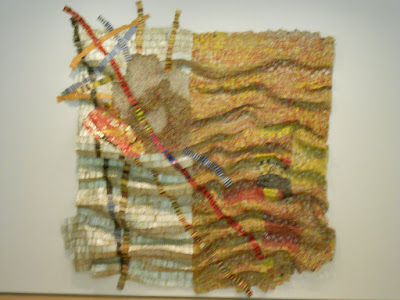Bridges here in this part of New England are iconic, historic, symbolic and essential, and last week they were under siege. A huge portion of them did not survive; wooden covered, stone arched, delicate iron spans and serviceable concrete alike. And roadways, some originally Indian traveling paths that followed the rivers have been erased. Cornfields that were Indian fields before they were white settler's were scoured of their loam right down to the bedrock last polished by glaciers. The Deerfield Valley, food basket for hundreds of years, and with ancient historical boundaries, is carved into new land with new river beds.
The human toll here is huge too. A week after the hurricane there is a small community butted up against the Berkshire hills that is still isolated, people not yet accounted for. Houses and barns on the drive we are taking to Williamstown are undercut, with possessions strewn in the yards, or hanging in the trees along the now quiet creeks. You can tell it happened in an instant. I know it is much worse to the west of us, in the Catskills, and north in Vermont. I have been beaten into a dark silence with the magnitude of it.
Here in the hills one watches the sky. Live here very long and you begin to feel the land. There are still bits and pieces that have never been cut or shaped by man. There are little hollows that have different weather. I have Native American friends whose tribal lands these were. White friends whose families have farmed the same land since the 1600's. Knowledge runs very deep.
Delta
We are on our way to the Sterling and Francine Clark Institute, a little marble gem of a place in Williamstown MA, to see work by El Anatsui, the Ghanian sculptor. I've known of his work since the Venice Biennale in 2007, when he draped the Palazzo Fortuny with a metal fabric that echoed the architecture, but this is the first time I have seen it first hand.
So many of the roads, the bridges we would usually take are closed, and so the trip takes 2 1/2 hours when normally it would take 1. It has become a pilgrimage, a prayer, this drive. We witness.
Delta, detail
El Anatsui has worked in many mediums; metal, clay, wood, but the 3 pieces we have come to see are recycled labels and caps of liquor bottles, fastened together with copper wire to form flexible metal blankets of extraordinary, mesmerizing beauty. They stun.
Intermittent Signals
His work speaks to me of shifting roads and rivers, hammered out in copper wire and old tin, fault lines running through continents and centuries, spilling and held back, defying it's materials to become molten movement, liquid time. El Anatsui himself speaks about change in his talks. He is adamant that the curators of shows of his work have the authority to manipulate the work to fit the space, to make it unique to the place in which it has come to rest. That seems an extraordinary and generous thing, to separate so completely from the work as to guarantee it has a life apart from it's creator.
Strips Of Earth's Skin
There is a subtext in these works, of colonialism and post colonialism and cultural appropriation . The very materials here are post consumer detritus from bottles imported from the west, originally, El Anatsui has said as a kind of currency to finance and perpetuate the slave trade. It strangely echoes the emotional-historical landscape I have just driven through, where the battle for White European supremacy over this land was really first begun, where time has layered the roads and even place names with a memory that runs as deep as the glacial rock below.









